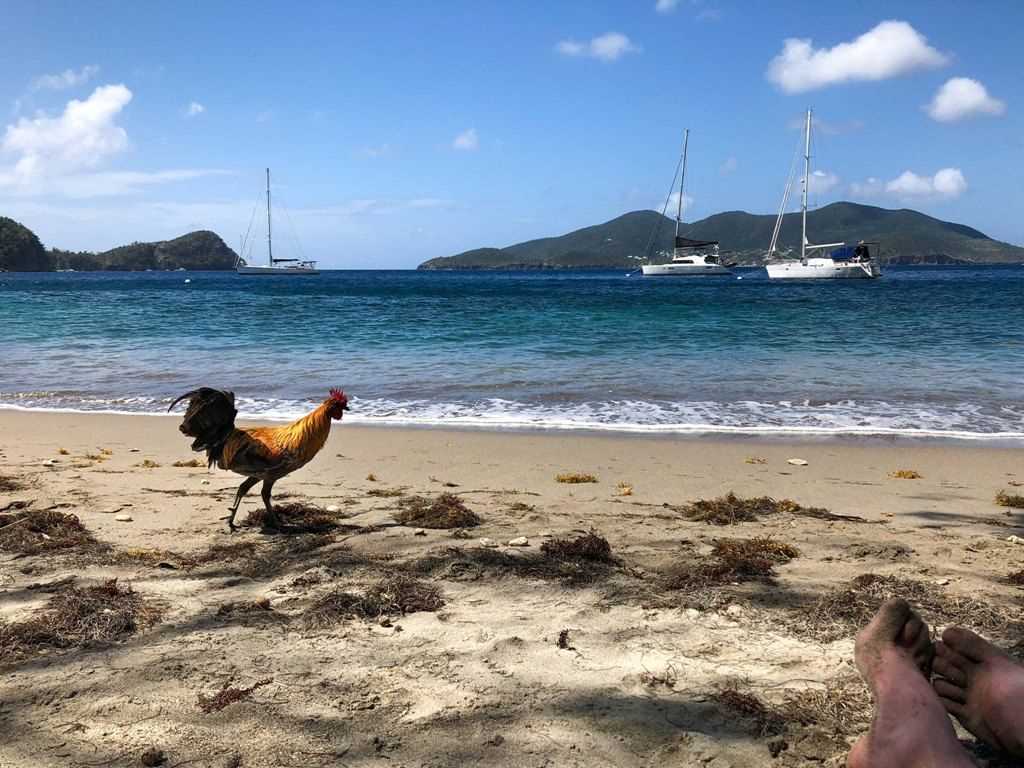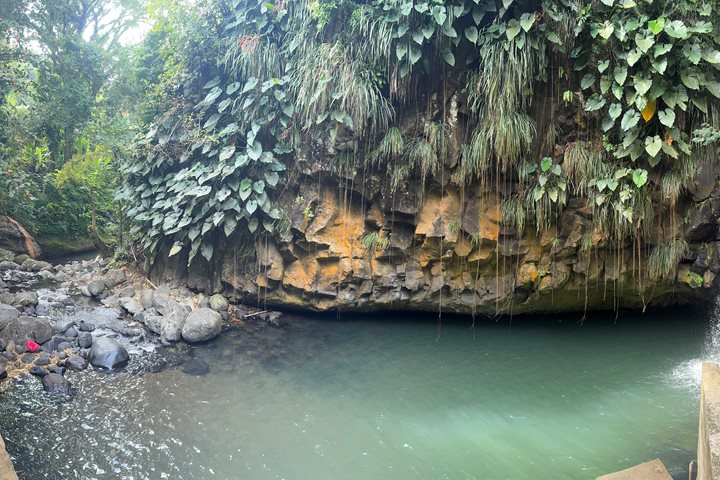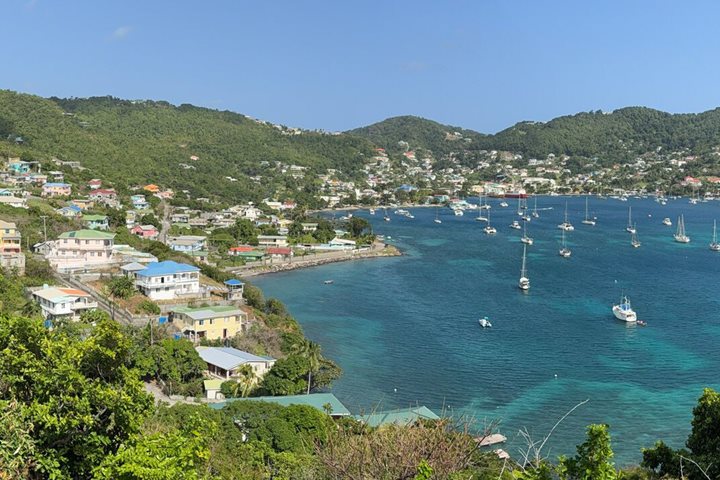Welcome, or Bienvenue, to France! We quietly dropped anchor last night in the archipelago of Iles des Saintes. Columbus named it the archipelago “of the Saints” because he first saw it on November 1st, the Feast of All Saints. We anchored a few hundred yards off the village of Petit-Bourg. This small archipelago of seven islands is a dependency of Guadalupe in the “Départment d’Outré Mer” and is a distinct region of France. It has the same relationship to France as Hawaii to the U.S. The inhabitants are French citizens, vote in all elections, and have all the privileges of other members of the European Union. As such, the official currency here is the Euro. The town’s two most imposing buildings are a lovely Catholic church and a town hall, proclaiming, Liberté, Egalité and Fraternité—ideals emerging from the French Revolution. Fisherman from Brittany originally settled the small islands of this archipelago and their descendants are still here today.
We arrive on shore at 8:45 a.m. Tom Heffernan led us up to the magnificent overlook of Fort Napoleon until 10:30 a.m. The vistas from the top of the island were remarkable--we could see Guadalupe to our north and Dominica to our south. During our visit to the fort and the museum, Tom explained the crucial Battle of the Saints,the largest naval battle in the Western Hemisphere, between April 7 and 12, 1782, which ended in the bloody defeat of the French ships under Admiral Comte de Grasse who surrendered his sword to the English Admiral George Rodney. Rodney was credited (mistakenly) with being the first commander to “break the line,” that is firing on the French from both starboard and port. The battle took place in these waters, just north of Dominica. Today Fort Napoleon has a museum and botanical garden with many representative species of flowering trees of the Lesser Antilles. In addition to the wonderful cacti, euphorbia, and aloes, we saw a number of large iguanas. Some of our intrepid group also managed to get in some time snorkeling on one of the small nearby beaches before returning to Sea Cloud.
The sailors went to the yards and hoisted the sails at 2:30 p.m. Once all sails were up, we were sailing along at 7 knots with a nice fresh wind of about 20 knots from the east. Later, Ian Strakan gave an informative talk on photography using the iPhone. Then after our afternoon tea, Tom O’Brien gave an equally informative and detailed talk on the history of the Sea Cloud. After Tom’s talk we were treated to a tour of the original cabins, accompanied by champagne and caviar!
We all went to a wonderful dinner, chatted, feasted, and drank until we happily went off to bed. Tomorrow the beguiling island of Bequia.









